Entry Database : PDB / ID : 1xkkTitle EGFR kinase domain complexed with a quinazoline inhibitor- GW572016 Epidermal growth factor receptor Keywords / / / Function / homology Function Domain/homology Component
/ / / / / / / / / / / / / / / / / / / / / / / / / / / / / / / / / / / / / / / / / / / / / / / / / / / / / / / / / / / / / / / / / / / / / / / / / / / / / / / / / / / / / / / / / / / / / / / / / / / / / / / / / / / / / / / / / / / / / / / / / / / / / / / / / / / / / / / / / / / / / / / / / / / / / Biological species Homo sapiens (human)Method / / / Resolution : 2.4 Å Authors Wood, E.R. / Truesdale, A.T. / McDonald, O.B. / Yuan, D. / Hassell, A. / Dickerson, S.H. / Ellis, B. / Pennisi, C. / Horne, E. / Lackey, K. ...Wood, E.R. / Truesdale, A.T. / McDonald, O.B. / Yuan, D. / Hassell, A. / Dickerson, S.H. / Ellis, B. / Pennisi, C. / Horne, E. / Lackey, K. / Alligood, K.J. / Rusnak, D.W. / Gilmer, T.M. / Shewchuk, L.M. Journal : Cancer Res. / Year : 2004Title : A unique structure for epidermal growth factor receptor bound to GW572016 (Lapatinib): relationships among protein conformation, inhibitor off-rate, and receptor activity in tumor cells.Authors : Wood, E.R. / Truesdale, A.T. / McDonald, O.B. / Yuan, D. / Hassell, A. / Dickerson, S.H. / Ellis, B. / Pennisi, C. / Horne, E. / Lackey, K. / Alligood, K.J. / Rusnak, D.W. / Gilmer, T.M. / Shewchuk, L. History Deposition Sep 29, 2004 Deposition site / Processing site Revision 1.0 Dec 7, 2004 Provider / Type Revision 1.1 Apr 30, 2008 Group Revision 1.2 Jul 13, 2011 Group Revision 1.3 Aug 23, 2023 Group Data collection / Database references ... Data collection / Database references / Derived calculations / Refinement description Category chem_comp_atom / chem_comp_bond ... chem_comp_atom / chem_comp_bond / database_2 / pdbx_initial_refinement_model / struct_ref_seq_dif / struct_site Item _database_2.pdbx_DOI / _database_2.pdbx_database_accession ... _database_2.pdbx_DOI / _database_2.pdbx_database_accession / _struct_ref_seq_dif.details / _struct_site.pdbx_auth_asym_id / _struct_site.pdbx_auth_comp_id / _struct_site.pdbx_auth_seq_id
Show all Show less
 Yorodumi
Yorodumi Open data
Open data Basic information
Basic information Components
Components Keywords
Keywords Function and homology information
Function and homology information Homo sapiens (human)
Homo sapiens (human) X-RAY DIFFRACTION /
X-RAY DIFFRACTION /  SYNCHROTRON /
SYNCHROTRON /  MOLECULAR REPLACEMENT / Resolution: 2.4 Å
MOLECULAR REPLACEMENT / Resolution: 2.4 Å  Authors
Authors Citation
Citation Journal: Cancer Res. / Year: 2004
Journal: Cancer Res. / Year: 2004 Structure visualization
Structure visualization Molmil
Molmil Jmol/JSmol
Jmol/JSmol Downloads & links
Downloads & links Download
Download 1xkk.cif.gz
1xkk.cif.gz PDBx/mmCIF format
PDBx/mmCIF format pdb1xkk.ent.gz
pdb1xkk.ent.gz PDB format
PDB format 1xkk.json.gz
1xkk.json.gz PDBx/mmJSON format
PDBx/mmJSON format Other downloads
Other downloads 1xkk_validation.pdf.gz
1xkk_validation.pdf.gz wwPDB validaton report
wwPDB validaton report 1xkk_full_validation.pdf.gz
1xkk_full_validation.pdf.gz 1xkk_validation.xml.gz
1xkk_validation.xml.gz 1xkk_validation.cif.gz
1xkk_validation.cif.gz https://data.pdbj.org/pub/pdb/validation_reports/xk/1xkk
https://data.pdbj.org/pub/pdb/validation_reports/xk/1xkk ftp://data.pdbj.org/pub/pdb/validation_reports/xk/1xkk
ftp://data.pdbj.org/pub/pdb/validation_reports/xk/1xkk
 Links
Links Assembly
Assembly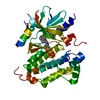
 Components
Components Homo sapiens (human) / Gene: EGFR, ERBB1 / Production host:
Homo sapiens (human) / Gene: EGFR, ERBB1 / Production host: 
 X-RAY DIFFRACTION / Number of used crystals: 1
X-RAY DIFFRACTION / Number of used crystals: 1  Sample preparation
Sample preparation SYNCHROTRON / Site:
SYNCHROTRON / Site:  APS
APS  / Beamline: 17-ID / Wavelength: 1 Å
/ Beamline: 17-ID / Wavelength: 1 Å Processing
Processing MOLECULAR REPLACEMENT
MOLECULAR REPLACEMENT Movie
Movie Controller
Controller



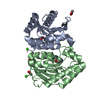

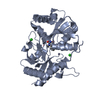
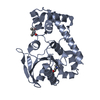
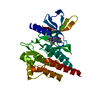
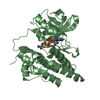

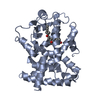
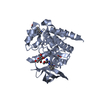
 PDBj
PDBj

















